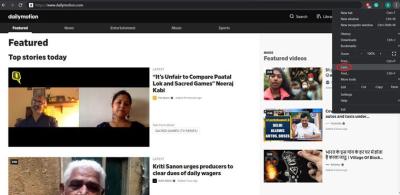Hey there! If you’re considering updating your online portfolio, you’ve probably heard about the shift from Adobe Portfolio to Behance. This move can seem a bit daunting, especially if you’ve put a lot of effort into developing your Adobe Portfolio. But don’t worry! This guide will make the migration smooth and stress-free, highlighting the perks of making this change. Let’s dive into why migrating is more than just a switch—it’s a step towards enhancing your creative presence and connecting with a larger community of artists and professionals.
Why Migrate from Adobe Portfolio to Behance
So, why should you consider leaping from Adobe Portfolio to Behance? Well, plenty of compelling reasons can make this transition worthwhile for you. Let’s break it down:
- Wider Exposure: Behance is a part of the Adobe family and boasts a larger audience. This means your work will be seen by more people, potentially increasing your visibility and opportunities for collaboration.
- Community Engagement: Behance fosters a rich community of creatives. You can interact with other artists, receive feedback, and even network for potential job offers or partnerships.
- Fantastic Projects Feature: Behance allows you to showcase your work in a project format. You can present your designs, sketches, and ideas more contextually, demonstrating your thought process and creativity.
- Analytics and Insights: With Behance, you can track how your work is performing. Knowing who views, likes, and comments on your projects can help you understand your audience better.
- Ease of Use: The platform is incredibly user-friendly. Uploading, organizing, and managing your projects is straightforward, making your content more accessible to viewers.
All these points make it clear that migrating to Behance isn't just about changing platforms; it's an upgrade to your digital portfolio that can lead to exciting new opportunities! So, what do you think? Ready to make this move?
Also Read This: Effortlessly Upload Files of Different Formats on Behance
Preparing for the Migration
When it's time to migrate your creative work from Adobe Portfolio to Behance, preparation is key. A smooth transition not only enhances the overall experience but also ensures that none of your valuable content is lost along the way. So, let’s dive into how you can get ready for this exciting switch!
Firstly, it’s a good idea to take an inventory of everything you plan to migrate. This includes:
- Projects: Gather all the projects you’ve worked on within Adobe Portfolio.
- Images & Videos: Ensure that you have high-quality images and videos available for re-uploading.
- Text Content: Don’t forget about the descriptions and narratives that accompany your work.
- Links & References: Collect any external links to relevant work or social profiles.
Next, consider organizing your content. You might want to create folders on your desktop or in cloud storage to categorize your projects based on themes, types, or dates. This organization can significantly reduce the time and frustration during the actual migration process.
Lastly, make sure you've set up your Behance account. If you haven’t joined yet, head over to Behance.net and create an account. Familiarize yourself with its features and interface, and perhaps even look at how other creative minds are showcasing their work for inspiration. With all these preparations in place, you'll be more than ready to migrate smoothly!
Also Read This: Ideal Dimensions for YouTube Shorts – A Creator’s Guide
How to Export Content from Adobe Portfolio
Once you're geared up for the migration, it’s time to focus on how to export your content from Adobe Portfolio. This step is crucial as it sets the foundation for bringing your creative projects to Behance seamlessly.
Adobe Portfolio doesn’t provide a direct ‘export’ button, but fear not! You can manually go through your projects and gather the necessary assets. Here’s how:
- Log in to Adobe Portfolio: Start by accessing your Adobe Portfolio account.
- Select Projects: Navigate to the 'Projects' tab and choose the projects you want to export.
- Download Images: For each project, you can individually click on the images to download them to your computer. Make sure to select high-res files if available.
- Copy Text Content: Highlight and copy any text descriptions, captions, or comments associated with your images. You can paste these into a document for later use.
- Gather External Links: Don’t forget to note down any associated links that you’ve included in your portfolio.
After gathering all your content, it’s wise to double-check everything to ensure you have all necessary files before heading over to Behance. Taking these steps will guarantee that once you start uploading to Behance, the process will feel like a breeze.
Also Read This: Is Depositphotos Better Than Shutterstock? A Comprehensive Comparison
5. Setting Up Your Behance Account
Alright, let’s get your Behance account set up! This part is pretty straightforward and exciting, as you’re one step closer to showcasing your creative work. Here’s what you need to do:
- Visit Behance.net: Start by navigating to the Behance website. It’s where all the magic happens!
- Create an Account: Click the “Sign Up” button at the top right corner. You can sign up using your Adobe ID, or you can opt for an email address. If you have an Adobe Creative Cloud subscription, using your ID might make things easier!
- Complete Your Profile: Once you’ve signed up, head over to your profile settings. Here, you can add:
- Your profile picture
- A catchy bio
- Links to your other social media accounts
- Your location (optional but recommended!)
Once you’ve completed these steps, congratulations! Your Behance account is officially set up. Take a moment to explore the platform. You'll find tons of inspiration and maybe even connect with other creatives. Let's get onto the next step!
Also Read This: Printing Large Images Across Multiple Pages
6. Importing Your Portfolio Content to Behance
Now that your Behance account is all set up and ready to go, it’s time to import your portfolio content. This is where the fun really begins! Transitioning your projects from Adobe Portfolio to Behance can be done smoothly. Here’s how:
- Prepare Your Portfolio Content: Before diving in, gather all the files, images, and project descriptions you want to import. It’s wise to organize them in folders on your computer for easy access.
- Log into Behance: Head back to Behance and log into your newly set-up account.
- Create a New Project: Click the “Create a Project” button. This will take you to an interface where you can add content.
- Upload Your Content: Start dragging and dropping files or click the upload button to add images, videos, or files. Behance supports a variety of formats, so make sure your content is compatible.
- Details Matter: As you import, take the time to fill out important details, such as:
- Project titles
- Descriptions that tell your audience about your creative process
- Tags to help individuals find your work
- Choosing a cover image that grabs attention!
And there you have it! Importing your portfolio to Behance can be like a digital spring cleaning, refreshing your online presence. Go ahead and bask in the creativity of your newly curated profile!
Also Read This: Using iStock Photos for Your Projects – A Complete Guide for Beginners
7. Organizing Your Behance Portfolio
Organizing your Behance portfolio is key to making a lasting impression on visitors and potential clients. A well-structured portfolio not only showcases your best work but also tells a coherent story about your creative journey. Here are some tips for organizing your portfolio effectively:
- Curate Your Best Work: Start by selecting a handful of your best projects. Aim for quality over quantity. Remember, it's better to show five exceptional pieces than fifty mediocre ones.
- Create Project Categories: Use Behance’s category options to group your work logically. This could include separating your projects by type, such as 'Graphic Design', 'Illustration', and 'Photography'. Having clear categories helps visitors navigate your portfolio more easily.
- Utilize the Featured Project Option: Behance allows you to feature specific projects at the top of your profile. Choose those that not only represent your style but are also likely to attract potential clients or collaborators.
- Maintain a Consistent Aesthetic: When posting new projects, ensure that you maintain a consistent visual style and layout. This can include using similar color schemes, fonts, and graphic styles across your pieces.
- Include Descriptions: Each project should include informative descriptions. Tell the story behind the piece, what your role was, and any challenges you overcame. This adds personal flair and depth.
By taking the time to organize your Behance portfolio thoughtfully, you’ll not only make it visually appealing but also user-friendly. This can help engage viewers and pique their interest in your work!
Also Read This: how to sell illustrations on adobe stock
8. Finalizing Your New Behance Portfolio
Once you've organized your portfolio, it's time to finalize it and make it shine! This step is crucial as it determines how viewers will perceive your brand. Here’s how to ensure your new Behance portfolio is polished and professional:
- Proofread Your Content: Nothing screams unprofessional more than typos and grammatical errors. Go through your project titles, descriptions, and any text on your profile to correct any mistakes.
- Check Thumbnail Images: Your project thumbnails are often the first impression you give. Ensure they are high-quality and accurately represent the work inside. If not, consider revising or replacing them.
- Engage with Your Audience: Once your portfolio is live, consider writing a blog post or sharing an announcement across social media. Invite people to check out your new Behance portfolio and provide feedback.
- Review Privacy Settings: Ensure that your portfolio settings reflect how public or private you want your work to be. Behance allows you to control who views your projects, which may be handy for sensitive works.
- Seek Feedback: Before you fully commit to your portfolio, share it with trusted peers or mentors to gather constructive criticism. Fresh eyes might catch things you've overlooked.
Finalizing your Behance portfolio is not just about aesthetics; it's about making sure your professional presence online is strong and cohesive. Once you're confident in your setup, you can sit back and watch as opportunities begin to flow in!
Updating Your Adobe Portfolio to Behance for Smooth Migration
If you're looking to easily transition your creative work from Adobe Portfolio to Behance, understanding the process is crucial. This step-by-step guide will help you navigate through the migration, ensuring you keep your artistic showcase intact while reaping the benefits of a larger community.
Both Adobe Portfolio and Behance are owned by Adobe and serve distinct purposes. While Adobe Portfolio allows users to create personal websites to display their work, Behance connects creatives and offers exposure to a broader audience. Thus, moving to Behance is a strategic choice for many artists. Here’s how to streamline the process:
Steps for Migration
- Export Your Adobe Portfolio: Start by downloading your content. Use the export function to save your projects, images, and text for easy upload later.
- Create a Behance Account: If you haven't already, sign up for a free Behance account. Use a professional email and profile picture to enhance your visibility.
- Upload Your Projects: Go to the “Create a Project” option on Behance. Here, you can upload the content you exported from your Adobe Portfolio.
- Add Tags and Descriptions: Make your projects easily discoverable by adding relevant tags and descriptions. Focus on keywords that resonate with your audience.
- Engage with the Community: Finally, showcase your work but also engage with other creatives. Comment, appreciate, and share others’ works to increase your visibility.
By following these steps, you can ensure a smooth migration from Adobe Portfolio to Behance, allowing you to reach a larger audience and explore new opportunities in the creative world.
Conclusion: Migrating your work to Behance can significantly expand your reach and foster connections in the creative community; by following these outlined steps, you can ensure a seamless transition while continuing to showcase your talent effectively.

 admin
admin








